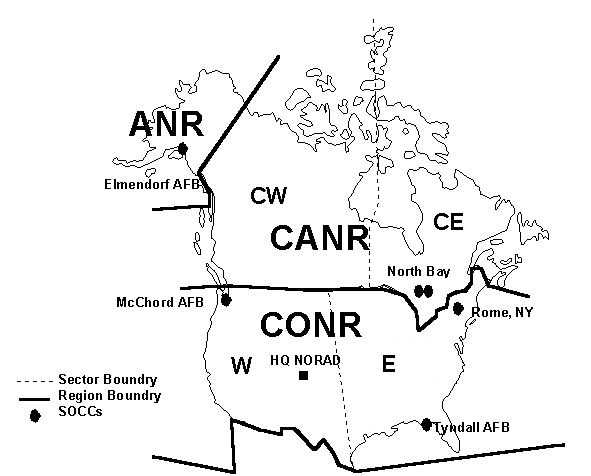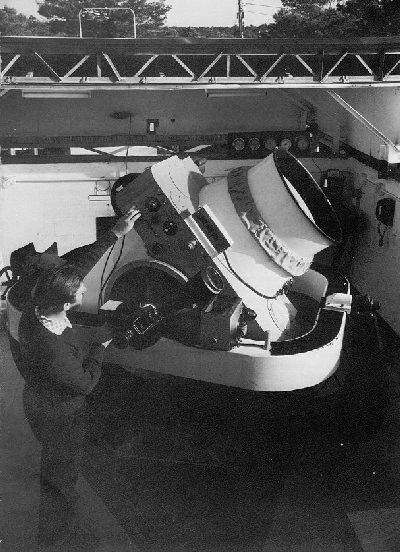|
Simplified Perturbations Models
Simplified perturbations models are a set of five mathematical models (SGP, SGP4, SDP4, SGP8 and SDP8) used to calculate orbital state vectors of satellites and space debris relative to the Earth-centered inertial coordinate system. This set of models is often referred to collectively as SGP4 due to the frequency of use of that model particularly with two-line element sets produced by NORAD and NASA. These models predict the effect of perturbation (astronomy), perturbations caused by the Earth’s shape, drag, radiation, and gravitation effects from other bodies such as the sun and moon. Simplified General Perturbations (SGP) models apply to near earth objects with an orbital period of less than 225 minutes. Simplified Deep Space Perturbations (SDP) models apply to objects with an orbital period greater than 225 minutes, which corresponds to an altitude of 5,877.5 km, assuming a circular orbit. The SGP4 and SDP4 models were published along with sample code in FORTRAN IV in 1 ... [...More Info...] [...Related Items...] OR: [Wikipedia] [Google] [Baidu] |
Orbital State Vectors
In astrodynamics and celestial dynamics, the orbital state vectors (sometimes state vectors) of an orbit are Cartesian vectors of position (\mathbf) and velocity (\mathbf) that together with their time (epoch) (t) uniquely determine the trajectory of the orbiting body in space. Frame of reference State vectors are defined with respect to some frame of reference, usually but not always an inertial reference frame. One of the more popular reference frames for the state vectors of bodies moving near Earth is the Earth-centered equatorial system defined as follows: *The origin is Earth's center of mass; *The Z axis is coincident with Earth's rotational axis, positive northward; *The X/Y plane coincides with Earth's equatorial plane, with the +X axis pointing toward the vernal equinox and the Y axis completing a right-handed set. This reference frame is not truly inertial because of the slow, 26,000 year precession of Earth's axis, so the reference frames defined by Earth's orienta ... [...More Info...] [...Related Items...] OR: [Wikipedia] [Google] [Baidu] |
Yoshihide Kozai
Yoshihide Kozai (1 April 1928 – 5 February 2018) was a Japanese astronomer specialising in celestial mechanics. He is best known for discovering, simultaneously with Michael Lidov, the Kozai mechanism, for which he received the Imperial Prize of the Japan Academy in 1979.Japan Academy61st-70th retrieved 2011-08-15 From 1988 to 1991, he was the president of the International Astronomical Union. In 1989, he received the Brouwer Award of the American Astronomical Society. In 2009, he won the Decoration of Cultural Merit from the Japanese government. He died on 5 February 2018 due to liver failure. The asteroid 3040 Kozai is named in his honour. References External links Oral history interview with Yoshihide Kozai on 2 September 1997, American Institute of Physics, Niels Bohr Library & Archives- interview conducted at the Tokyo Institute of Technology is a national research university located in Greater Tokyo Area, Japan. Tokyo Tech is the largest institution f ... [...More Info...] [...Related Items...] OR: [Wikipedia] [Google] [Baidu] |
North American Aerospace Defense Command
North American Aerospace Defense Command (NORAD ), known until March 1981 as the North American Air Defense Command, is a combined organization of the United States and Canada that provides aerospace warning, air sovereignty, and protection for Canada and the continental United States. Headquarters for NORAD and the NORAD/ United States Northern Command (USNORTHCOM) center are located at Peterson Space Force Base in El Paso County, near Colorado Springs, Colorado. The nearby Cheyenne Mountain Complex has the Alternate Command Center. The NORAD commander and deputy commander (CINCNORAD) are, respectively, a United States four-star general or equivalent and a Canadian lieutenant-general or equivalent. Organization CINCNORAD maintains the NORAD headquarters at Peterson Space Force Base near Colorado Springs, Colorado. The NORAD and USNORTHCOM Command Center at Peterson SFB serves as a central collection and coordination facility for a worldwide system of sensors des ... [...More Info...] [...Related Items...] OR: [Wikipedia] [Google] [Baidu] |
Orbital Perturbations
Orbital may refer to: Sciences Chemistry and physics * Atomic orbital * Molecular orbital * Orbital hybridisation, Hybrid orbital Astronomy and space flight * Orbit ** Earth orbit Medicine and physiology * Orbit (anatomy), also known as the ''orbital bone'' * Orbitofrontal cortex, a part of the brain used for decision making Business * Orbital Corporation, an Australian engine technology company * Orbital Sciences Corporation, a U.S. satellite launch and defense systems corporation * Orbital ATK, American aerospace manufacturer formed from the merger of Orbital Sciences Corporation and parts of Alliant Techsystems Transportation * Ring road (or ''orbital road'' in some regions) * Orbital (metro), a rapid transit line usually encircling a city centre * Orbital engine Other uses * Orbital (The Culture), artificial worlds from Iain M. Banks's series of science fiction novels, the Culture * Orbital (band), an English electronic dance music duo ** Orbital (1991 album), ''Orbital'' ... [...More Info...] [...Related Items...] OR: [Wikipedia] [Google] [Baidu] |
Jet Propulsion Laboratory
The Jet Propulsion Laboratory (JPL) is a federally funded research and development center and NASA field center in the City of La Cañada Flintridge, California, United States. Founded in the 1930s by Caltech researchers, JPL is owned by NASA and managed by the nearby California Institute of Technology (Caltech). The laboratory's primary function is the construction and operation of planetary robotic spacecraft, though it also conducts Earth-orbit and astronomy missions. It is also responsible for operating the NASA Deep Space Network. Among the laboratory's major active projects are the Mars 2020 mission, which includes the '' Perseverance'' rover and the '' Ingenuity'' Mars helicopter; the Mars Science Laboratory mission, including the '' Curiosity'' rover; the InSight lander (''Interior Exploration using Seismic Investigations, Geodesy and Heat Transport''); the ''Mars Reconnaissance Orbiter''; the '' Juno'' spacecraft orbiting Jupiter; the '' SMAP'' satellite for earth ... [...More Info...] [...Related Items...] OR: [Wikipedia] [Google] [Baidu] |
Navigation And Ancillary Information Facility
Navigation is a field of study that focuses on the process of monitoring and controlling the movement of a craft or vehicle from one place to another.Bowditch, 2003:799. The field of navigation includes four general categories: land navigation, marine navigation, aeronautic navigation, and space navigation. It is also the term of art used for the specialized knowledge used by navigators to perform navigation tasks. All navigational techniques involve locating the navigator's position compared to known locations or patterns. Navigation, in a broader sense, can refer to any skill or study that involves the determination of position and direction. In this sense, navigation includes orienteering and pedestrian navigation. History In the European medieval period, navigation was considered part of the set of '' seven mechanical arts'', none of which were used for long voyages across open ocean. Polynesian navigation is probably the earliest form of open-ocean navigation; it was b ... [...More Info...] [...Related Items...] OR: [Wikipedia] [Google] [Baidu] |
Goddard Space Flight Center
The Goddard Space Flight Center (GSFC) is a major NASA space research laboratory located approximately northeast of Washington, D.C. in Greenbelt, Maryland, United States. Established on May 1, 1959 as NASA's first space flight center, GSFC employs approximately 10,000 civil servants and contractors. It is one of ten major NASA field centers, named in recognition of American rocket propulsion pioneer Robert H. Goddard. GSFC is partially within the former Goddard census-designated place; it has a Greenbelt mailing address.CENSUS 2000 BLOCK MAP: GODDARD CDP " U.S. Census Bureau. Retrieved on September 1, 2018. 1990 Census map of Prince George's County [...More Info...] [...Related Items...] OR: [Wikipedia] [Google] [Baidu] |
Molniya Orbit
A Molniya orbit ( rus, Молния, p=ˈmolnʲɪjə, a=Ru-молния.ogg, "Lightning") is a type of satellite orbit designed to provide communications and remote sensing coverage over high latitudes. It is a highly elliptical orbit with an inclination of 63.4 degrees, an argument of perigee of 270 degrees, and an orbital period of approximately half a sidereal day. The name comes from the '' Molniya'' satellites, a series of Soviet/Russian civilian and military communications satellites which have used this type of orbit since the mid-1960s. The Molniya orbit has a long dwell time over the hemisphere of interest, while moving very quickly over the other. In practice, this places it over either Russia or Canada for the majority of its orbit, providing a high angle of view to communications and monitoring satellites covering these high-latitude areas. Geostationary orbits, which are necessarily inclined over the equator, can only view these regions from a low angle, hamperi ... [...More Info...] [...Related Items...] OR: [Wikipedia] [Google] [Baidu] |
Geostationary
A geostationary orbit, also referred to as a geosynchronous equatorial orbit''Geostationary orbit'' and ''Geosynchronous (equatorial) orbit'' are used somewhat interchangeably in sources. (GEO), is a circular geosynchronous orbit in altitude above Earth's equator ( in radius from Earth's center) and following the direction of Earth's rotation. An object in such an orbit has an orbital period equal to Earth's rotational period, one sidereal day, and so to ground observers it appears motionless, in a fixed position in the sky. The concept of a geostationary orbit was popularised by the science fiction writer Arthur C. Clarke in the 1940s as a way to revolutionise telecommunications, and the first satellite to be placed in this kind of orbit was launched in 1963. Communications satellites are often placed in a geostationary orbit so that Earth-based satellite antennas do not have to rotate to track them but can be pointed permanently at the position in the sky where the s ... [...More Info...] [...Related Items...] OR: [Wikipedia] [Google] [Baidu] |
United States Space Surveillance Network
The United States Space Surveillance Network (SSN) detects, tracks, catalogs and identifies artificial objects Geocentric orbit, orbiting Earth, e.g. active/inactive satellites, spent rocket bodies, or Space debris, fragmentation debris. The system is the responsibility of United States Space Command and operated by the United States Space Force. Space surveillance accomplishes the following: * Predict when and where a Orbital decay, decaying space object will Atmospheric entry, re-enter the Earth's atmosphere; * Prevent a returning space object, which to radar looks like a missile, from triggering a false alarm in missile-attack warning sensors of the U.S. and other countries; * Chart the present position of space objects and plot their anticipated orbital paths; * Detect new artificial objects in space; * Correctly map objects traveling in Earth orbit; * Produce a running catalog of artificial space objects; * Determine ownership of a re-entering space object; * Inform NASA wheth ... [...More Info...] [...Related Items...] OR: [Wikipedia] [Google] [Baidu] |
Epoch (astronomy)
In astronomy, an epoch or reference epoch is a moment in time used as a reference point for some time-varying astronomical quantity. It is useful for the celestial coordinates or orbital elements of a celestial body, as they are subject to perturbations and vary with time. These time-varying astronomical quantities might include, for example, the mean longitude or mean anomaly of a body, the node of its orbit relative to a reference plane, the direction of the apogee or aphelion of its orbit, or the size of the major axis of its orbit. The main use of astronomical quantities specified in this way is to calculate other relevant parameters of motion, in order to predict future positions and velocities. The applied tools of the disciplines of celestial mechanics or its subfield orbital mechanics (for predicting orbital paths and positions for bodies in motion under the gravitational effects of other bodies) can be used to generate an ephemeris, a table of values giving the po ... [...More Info...] [...Related Items...] OR: [Wikipedia] [Google] [Baidu] |




